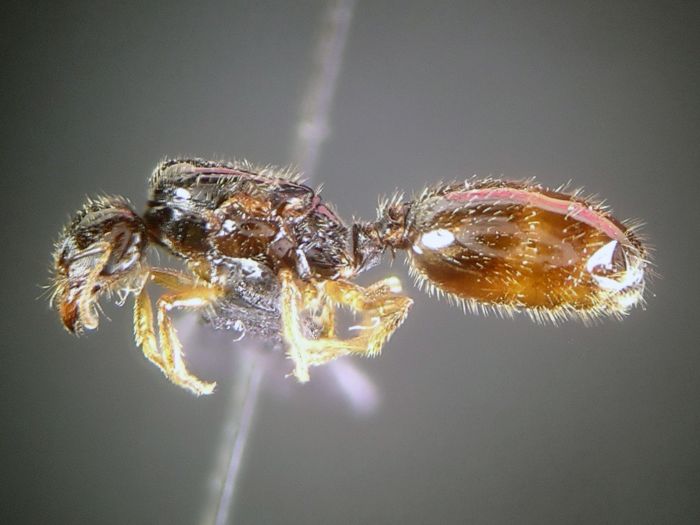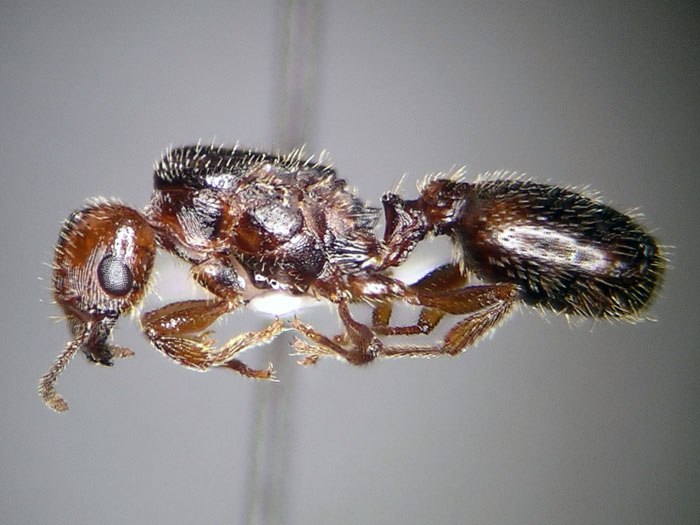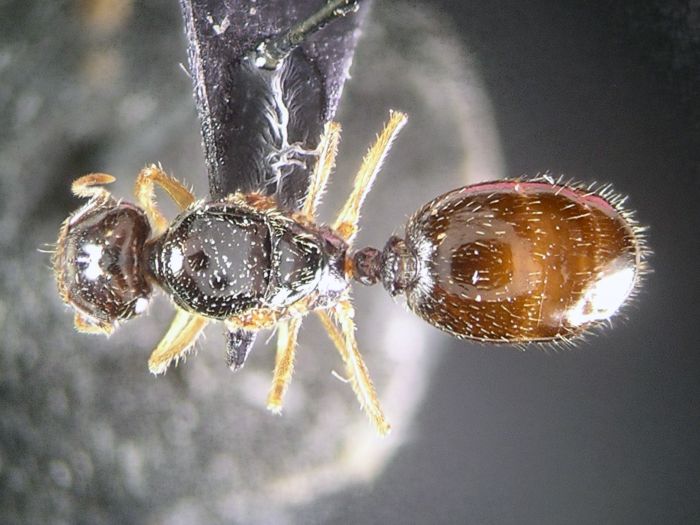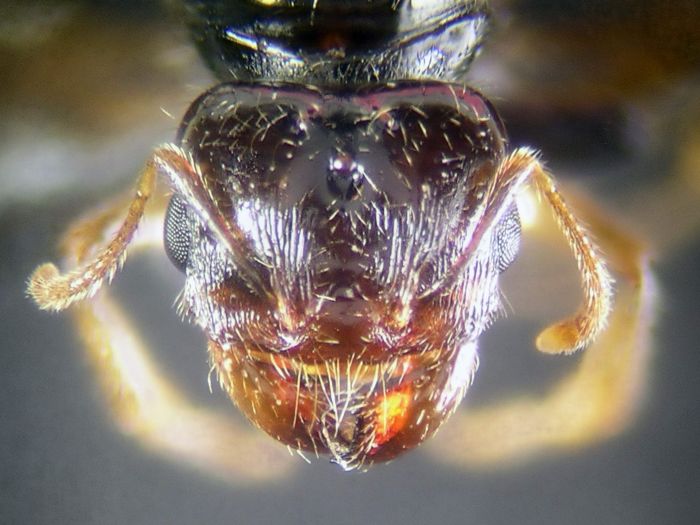1. Location of collection: Llano, California.
2. Date of collection: 3-20-2015.
3. Habitat of collection: High Desert.
4. Length (from head to gaster): 9 mm.
5. Color, hue, pattern and texture: Shiny. Black head with dark red mandibles; black thorax; very dark red gaster, lighter between terga.
6. Distinguishing characteristics: Second and third gastral terga bald, except discal hairs between them. Very short spines.
7. Anything else distinctive: Has mating flight in March.
8. Nest description: Founding chamber is a small, typical looking fan of dirt with a hole in the middle.
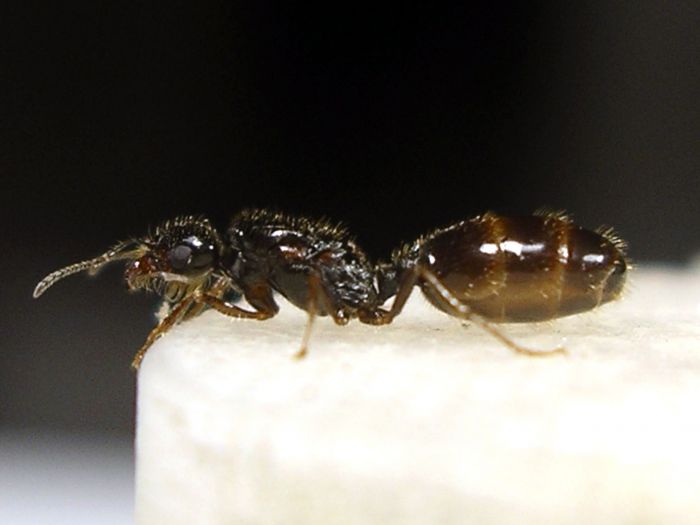
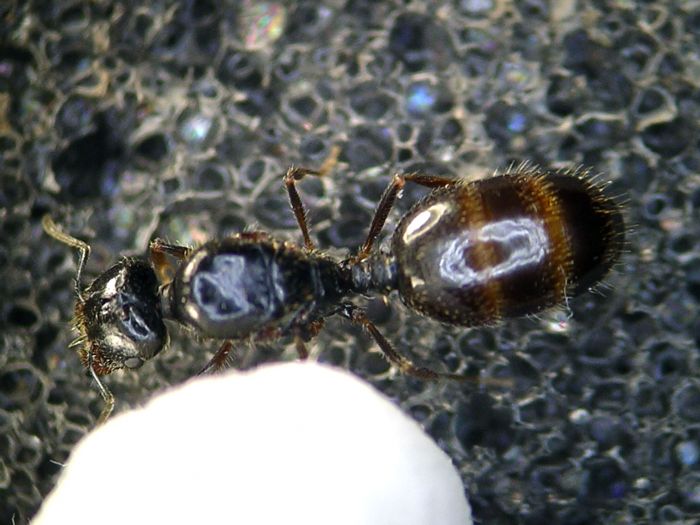
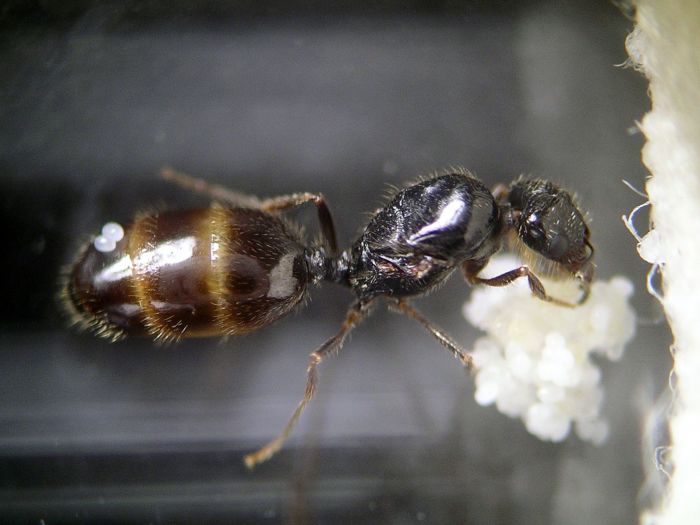
Edit: Added a new image.
Edited by dspdrew, April 5 2015 - 3:45 PM.





